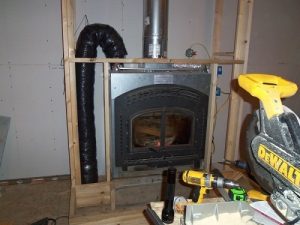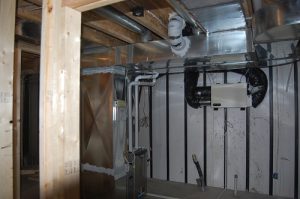Whole house ventilation systems are an excellent way update the functionality of heat and air-conditioning systems and to enhance indoor air quality. Its relevance for a healthy house has grown as energy efficient building technologies have developed, although this technology isn’t old. Now ‘s houses are assembled to be almost airtight, reduce energy use and prices and so that you can enhance HVAC efficiency. Sadly an air-tight house isn’t best for the health of its occupants. A clean atmosphere is essential inside but relaxation amounts can be reduced by the clean atmosphere and make equipment work when heating or air conditioning is running. Energy recovery ventilation systems and heat offer a simple and affordable method to solve this difficulty.
What’s A Heat Recovery Ventilator
 A heat recovery ventilator also called a heat exchanger is an essential part of an energy efficient building. Enhanced insulation and other measures that produce a building air-tight help keep down electricity bills and reduce energy consumption. Regrettably, additionally, they prevent the induction of clean air, something that buildings require to preserve indoor air quality. Heat recovery ventilators (HRVs) ensure an adequate flow of clean air without endangering the HVAC system’s efficient functioning. HRVs can recover a sizeable part of the energy before exhausting the rancid atmosphere exterior already used the atmosphere, and use that energy to check the clean atmosphere.
A heat recovery ventilator also called a heat exchanger is an essential part of an energy efficient building. Enhanced insulation and other measures that produce a building air-tight help keep down electricity bills and reduce energy consumption. Regrettably, additionally, they prevent the induction of clean air, something that buildings require to preserve indoor air quality. Heat recovery ventilators (HRVs) ensure an adequate flow of clean air without endangering the HVAC system’s efficient functioning. HRVs can recover a sizeable part of the energy before exhausting the rancid atmosphere exterior already used the atmosphere, and use that energy to check the clean atmosphere.
Saving Money With A Residential Energy Recovery Ventilator Energy recovery ventilators (ERVs) work in a fashion similar to HRVs but with the additional thought of removing humidity from your incoming fresh air, transferring it instead to the rancid air being vented out. Both heat and cooling efficiency improve, keep indoor humidity levels at optimum values and enable HVAC systems to be scaled down without losing effectiveness. Although ERVs are inappropriate to be used in hot, humid climates, they are quite powerful in those areas where winters are extreme. Under optimum functioning, ERVs can regain between 70 and 80 percent of the energy from exhaust air, transferring that energy to the supply air that is clean.
Are You Able To Profit From Whole Home Ventilation
 If your house was built within the last twenty years, or if you might have made advancements intended to reduce air reduction (energy efficient windows or updated weatherproofing for example), the odds are great that entire home ventilation, heat recovery or energy recovery system will be exceptionally valuable. Similarly, if you’ve discovered an undesirable quality of indoor atmosphere. Dry eyes or mouth, frequent respiratory infections or breathing difficulties may evidence this. In case you are contemplating a brand new HVAC system, specialists also suggest adding energy retrieval system and a ventilation as a part of the new gear. Both HRVs and ERVs will reduce energy prices, particularly in climates during summer or winter months.
If your house was built within the last twenty years, or if you might have made advancements intended to reduce air reduction (energy efficient windows or updated weatherproofing for example), the odds are great that entire home ventilation, heat recovery or energy recovery system will be exceptionally valuable. Similarly, if you’ve discovered an undesirable quality of indoor atmosphere. Dry eyes or mouth, frequent respiratory infections or breathing difficulties may evidence this. In case you are contemplating a brand new HVAC system, specialists also suggest adding energy retrieval system and a ventilation as a part of the new gear. Both HRVs and ERVs will reduce energy prices, particularly in climates during summer or winter months.
Even if an HRV or ERV system isn’t suitable for your house, consider adding supply ventilation system, an exhaust ventilation system or a balanced ventilation system. An accredited HVAC contractor in your town can describe advantages and the costs of each kind of system and assist you to assess whether whole house ventilation is cost effective for lifestyle, well-being, and your house.